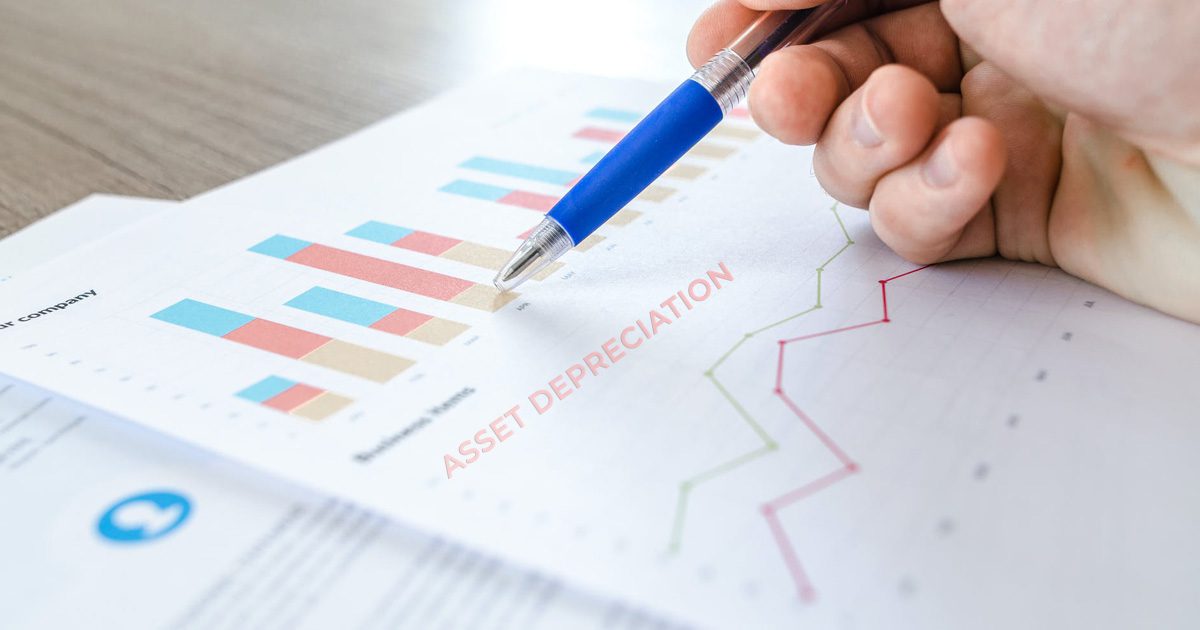Every business owner knows the importance of asset depreciation as everything a company owns generally loses value over time. Asset depreciation allows a company to deal with its assets and deduct the value from its corporate income taxes. On the other hand, small companies can make use of their fixed assets during hard times. For instance, when closing a business due to economic loss, companies can use their fixed assets to compensate terminated employees.
Read more about Closing Your Business in China and How to Deal With It
What does asset depreciation mean for businesses? What are the things to consider when looking through the assets to depreciate? How does it help reflect the real value of a company? Keep reading to find out!
Defining asset and depreciation
What is an asset?
An asset is anything an entity (person, company, country, etc.) owns under its name and/or has control over. Moreover, it provides future monetary benefits because of its economic value. Such benefits may include:
- Generating future cash flows such as inventory items, receivable accounts, investments;
- Reducing expenses such as machinery, warehouses, equipment; or
- Improving sales such as patents, goodwill, or brand name.
What is depreciation?
Assets may come in the form of cash, the right to receive money from customers’ purchases (receivables), natural resources, intellectual properties, etc. Physical properties like equipment wear down with usage or overtime. Hence, depreciation reflects this change in the value in the company records.
On the other hand, brands, intangible assets like patents, copyright, and franchise go through amortization rather than depreciation. Furthermore, a similar process called depletion also applies to natural resources like minerals and oil reserves.
Why asset depreciation is necessary?
Over time, the value of assets (except land, generally) becomes less than when they were first bought or created. Depreciation is the accounting process that shows how a company allocates or divides an asset’s cost (or initial value) through its useful life. By spreading the initial price of the asset over its estimated useful life, companies can also divide the significant portion of the expenses on a firm’s financial statements.
Consider equipment bought in 2020 worth USD 1 million and is useful for 10 years. The correct accounting would be to “capitalize” and present it as an asset. Over the course of 10 years, the company can decrease its worth by deducting USD 100,000 every year through “depreciation expense“. However, if the company does not depreciate the equipment annually, it will lose USD 1 million worth of value in 2020. Therefore, the company’s financials should reflect the value of the equipment over time and not just in the year it was bought. This is to offset the effects of natural wear and tear with the income generated annually (directly or indirectly) by it. Without depreciation, a company’s financial statements can mislead potential investors and other stakeholders.
Asset depreciation may also imply tax benefits as it can lower tax liabilities. Depreciation allows companies to lessen their net income, and thus, lower their initial tax liabilities.
Assets: Where to find it, how to analyze it, and why?
A company’s balance sheet indicates the record of assets. Depreciable assets come with an account called “Accumulated Depreciation“. Through this, a company can see an asset’s initial cost and how much its value has declined over time. In addition, depreciation also shows the value of these assets when their initial cost and value are considered together since the release of the financial statements (or “Net Book Value”).
It is not enough to know the bottom line like earnings per share. Investors and analysts need to be aware of assumptions and accounting methods that produce figures in financial statements because companies tend to work hard to make sure their figures and values look enticing to investors and presentable to analysts and other stakeholders. Here are some assumptions and terms to consider when looking through assets:
Method and rate of depreciation
Management chooses the method of depreciation. It also determines the deduction rate for the value of the respective assets per year. In the short term, this affects the amount of applicable depreciation expense to the income statement. In the long term, however, the value of the asset by the end of its useful life is the same for any method chosen. Therefore, it barely affects the depreciation expense.
The useful life of the asset
Analyzing assets involves having the knowledge of assets’ typical “life span” or useful life. For instance, the rate of obsolescence for a building (50 years or so) is not the same as a car (three to five years or so). Since management is free to choose which useful life is applied to groups of assets, they can then control how much depreciation expense these contribute to the income statement. “Longer useful life makes for smaller expense per year”. On the other hand, assets with a shorter lifespan may reflect a company’s aggressive depreciation methods.
Scrap value of the asset
Scrap value is another assumption the management is allowed to make. This refers to the estimated value of the asset at the end of its useful life if the company chooses to sell it in its well-worn state. When looking through assets, one must be critical of the scrap value or “salvage value”. Say, for example, a ten-year-old car sold for a quarter of its original price is not a very good price for it. Vehicles tend to be fully depreciated at three to five years or so, and new versions are always available for better value. The longer the useful life of an asset and the greater the scrap value, the less its depreciation will be over its life. Therefore, lower depreciation raises reported earnings and boosts book value.
Sometimes, companies seeking a loan to cover the costs of purchasing new machinery may have high accumulated depreciation and therefore, low Net Book Value. Potential investors and Mergers & Acquisition (M&A) processes tend to also review assets to assess the real value of the company by implementing due diligence. It is important to hire a team that will cover all areas to know the pros and cons, the weaknesses and strengths of the company.
Due diligence practice
Our due diligence practice goes beyond standard asset and liability review. We offer partial and holistic due diligence solutions throughout the life-cycle of the transaction process. S.J. Grand’s financial advisory team arms investors with customized target proposals based on our financial and legal investigation, market research, detailed competitor review, channel analysis, and company valuation. We assess real company value, uncovering the potential weaknesses and hidden opportunities that are vital to effective acquisition negotiations.
Fixed asset and depreciation analysis tool
Our financial advisory team is also equipped with a software solution called Kwikdroid which applies advanced data analytics for asset depreciation. Kwikdroid is a Cloud-based company management tool that can accurately perform and automate several tasks in one single platform. With Kwikdroid, we can provide deeper insights into your company’s financial forecasting, tax planning, and asset depreciation. We can also assist your personnel in navigating through the Kwikdroid system to augment your in-house technological capabilities.
Visit our Kwikdroid page to learn more about its features and customization packages we offer.
Conclusion
Assets increase (or decrease) the value of the company. By depreciating it, companies reflect the real value of the company and its possessions as time passes by. Potential and current investors, banks, and other stakeholders need to understand the intricacies involved in the figures presented by companies. It is important to have at hand experts who understand the process the companies undertake to come up with their figures in the financial statements.
Contact us
If you are interested in Kwikdroid, contact us or go to our Kwikdroid page to request a demo and see the prices and packages we offer. You can also check our tax and accountancy page to know more about our specialist services.
S.J. Grand also offers Cloud ERP services for your business if you are currently experiencing difficulty in managing your operations amid the COVID-19 pandemic. Check out our IT services page for more details.







